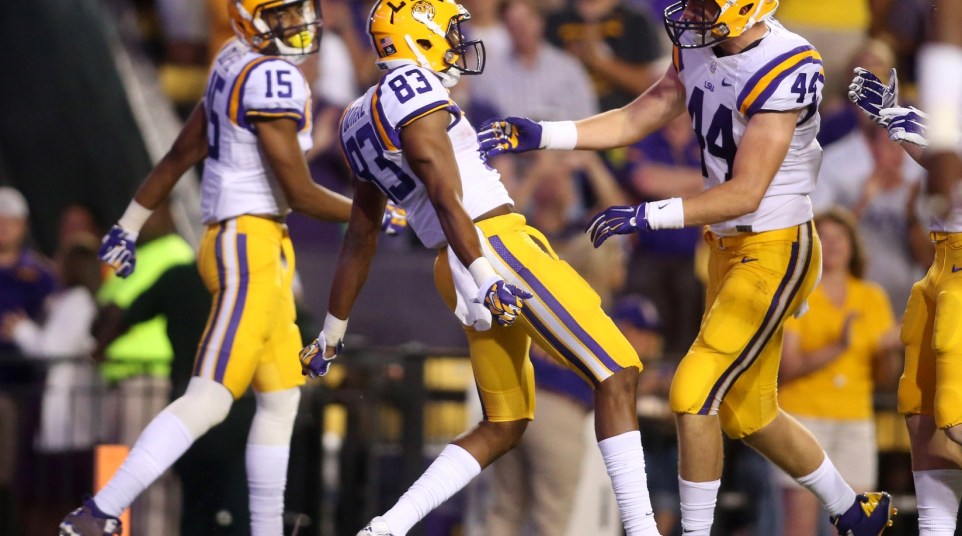Don't be fooled: LSU receivers bring plenty of skill
The numbers from 2014 are a bit misleading. Yes, LSU ranked at the bottom of the SEC in passing yards, and near the bottom of country of FBS in the category as well. While that points to problems throughout the offense, it’s not fair to blame the receivers.
LSU’s crop of pass catchers is among the most talented in the SEC, despite the lack of production in 2014. Part of the problem with the team was youth, especially out wide. Travin Dural was the most experienced of the group, coming into the season as a redshirt sophomore, but he’d only caught seven passes coming into the season. LSU’s next three leading receivers — Malachi Dupre, Trey Quinn and John Diarse — were all getting their first college action as freshmen.
The Tigers added to their talented quartet this recruiting cycle, bringing in one of the nation’s top high school receivers, Tyron Johnson, and two four-star prospects, Derrick Dillon and Jazz Ferguson.
Perhaps the most encouraging part of LSU’s still-young group of receivers: they’re all a bit different, with no two seemingly having the same strong suit.
Let’s take a look at what each of the Tigers’ four returning receivers does best.
- Dural — taking the top off the defense: The lanky Dural is a burner, and he’s a huge asset to LSU when he can get behind the secondary and stretch the defense out. Many of the deep balls thrown his way in 2014 ended up wobbling out of bounds, negating his value as the season went along, but if he ends up with single coverage in 2015 he’ll be a home-run threat on every passing down.
- Dupre — hands: Like any freshman, Dupre had some rough patches in 2014. While he didn’t get as many looks later in the season as he would have liked, Dupre showed more than enough to be considered a breakout candidate in 2015. His biggest strength is his ability to come down with tough catches, thanks to a phenomenal set of hands.
- Quinn — route running: While Quinn isn’t the biggest guy on the field, he does have the speed and quickness to excel in the SEC. He puts them to good use in his route running, with precise cuts he used to get open in some crucial situations in 2014. While his hands came to be an issue, you have to love how good of a job he does to get himself open.
- Diarse — after-catch ability: Diarse has decent size and okay speed, but he seems to find a way to make things happen for himself after catching the ball. His 18.3 yards-per-catch average from 2014 is plenty evidence of that.
With the quartet on hand and the talent coming in, LSU should begin its rebound from the SEC’s basement in 2015, regardless of quarterback. Of course, they still need plenty of improvement under center. The receivers should make that easier, though.

